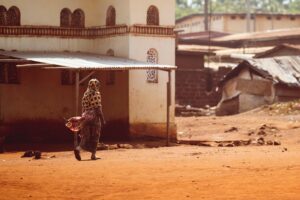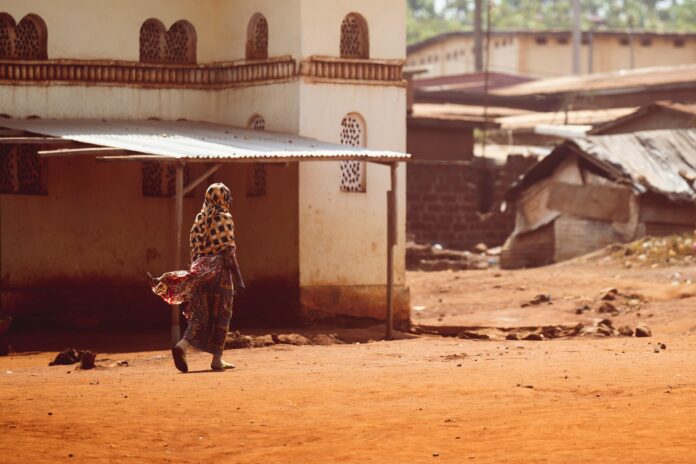Living in a third-world country is a harsh reality for millions, especially for those living in areas affected by war, instability, and natural disasters. These regions, often marked by underdeveloped infrastructure and limited access to essential services, face challenges exacerbated by conflicts that tear families and communities apart. For individuals in such environments, the day-to-day fight for survival takes on a deeper meaning, especially as they grapple with the constant threat of war, poverty, and an uncertain future.
Life in War-Torn Countries
In countries plagued by war, like parts of Syria, Yemen, or Afghanistan, civilians are often the hardest hit. Bombings, political instability, and the displacement of entire communities have led to massive humanitarian crises. According to the United Nations, millions of people are forced to flee their homes every year, creating large refugee populations with limited resources.
In these situations, survival becomes an incredibly difficult task. Access to food, clean water, and medical care becomes scarce, with infrastructure and hospitals either destroyed or overwhelmed. These conditions create a sense of vulnerability, as residents may be forced to choose between risking their lives by staying or fleeing to uncertain, overcrowded refugee camps.
The Role of Humanitarian Aid and Organizations
Amid such dire circumstances, humanitarian organizations step in to provide aid and relief. One such organization is the Federal Emergency Management Agency (FEMA), which, while primarily focused on the United States, sets a precedent for how disaster response and recovery should be handled in a crisis. FEMA’s approach—organizing emergency supplies, providing shelter, and coordinating with local authorities—can serve as a model for similar efforts in developing countries or regions struck by war.
However, international organizations like the Red Cross, UNHCR, and Médecins Sans Frontières (Doctors Without Borders) are often the lifeline for those living in conflict zones. They bring medical supplies, food, and offer critical evacuation services. Still, their operations are sometimes hindered by lack of access to affected areas, limited resources, or political restrictions imposed by warring factions.
Struggling with Limited Resources
In war-torn countries, even when aid is available, the need often far outstrips the supply. Refugee camps can become overcrowded, leading to unsanitary conditions and an increased risk of disease. In the midst of conflict, daily life becomes a fight for the basics—finding food, clean water, and avoiding violence. The children in these regions are particularly vulnerable, not only to malnutrition and disease but also to psychological trauma.
Many children born in war zones grow up knowing only conflict and fear. The absence of schools and access to education in conflict zones means that the cycle of poverty and instability continues for future generations. With limited access to healthcare, the long-term mental and physical health consequences of growing up in such an environment can be severe.
Resilience Amid Adversity
Despite these overwhelming challenges, communities in war-torn regions often display extraordinary resilience. People find ways to adapt, survive, and even rebuild in the aftermath of war. For example, in places like Bosnia or Rwanda, where war left deep scars, local communities have worked to heal and move forward. The rebuilding of infrastructure, such as schools, markets, and homes, is done with the help of international aid and grassroots efforts.
Similarly, individuals often take extraordinary measures to provide for their families. Many turn to small-scale farming, bartering, or informal economies to make ends meet. In some cases, displaced individuals form tight-knit communities that offer social support and collective survival strategies.
The Role of Technology in Rebuilding
In an increasingly connected world, technology is also playing a role in rebuilding and providing solutions in conflict zones. For instance, mobile phones and the internet have become tools for coordinating aid, providing education through online platforms, and offering psychological support through virtual counseling.
Organizations like UNICEF have launched initiatives to offer mobile learning opportunities in conflict zones, and aid groups use technology to track supplies, coordinate deliveries, and raise awareness about the needs of refugees and displaced persons.
A Glimmer of Hope
While life in third-world countries devastated by war and conflict is undoubtedly challenging, there are efforts to rebuild, stabilize, and create hope for a better future. The international community, led by humanitarian organizations and governments, plays a crucial role in providing immediate relief and supporting long-term recovery.
Through the tireless work of these organizations, along with the resilience and determination of the people in conflict zones, it is possible to imagine a future where these countries can rebuild and recover. However, the road to recovery is long, and requires sustained effort, both on the ground and globally. As such, individuals and organizations continue to push for peace, stability, and justice, in the hopes that one day the cycle of violence and hardship will end, and a brighter future will emerge for the next generation.
In the end, while the struggles of those living in war-torn countries are immense, their resilience and the efforts of humanitarian organizations provide a glimmer of hope that, no matter the adversity, humanity can rebuild and thrive.

Views: 4






